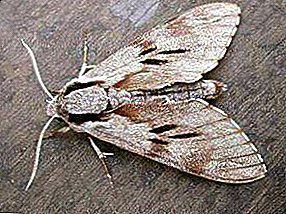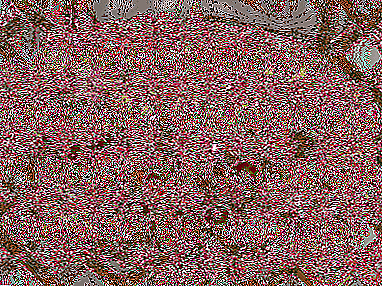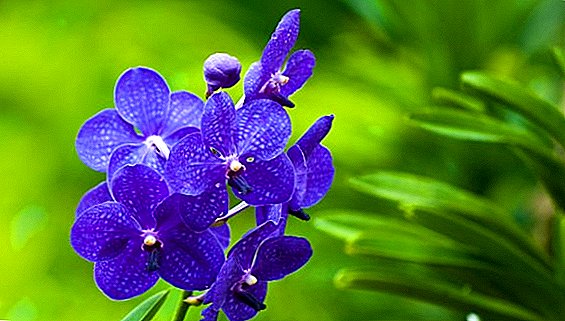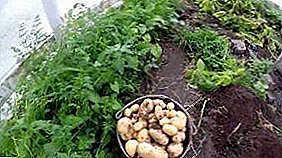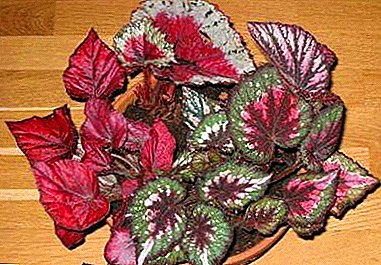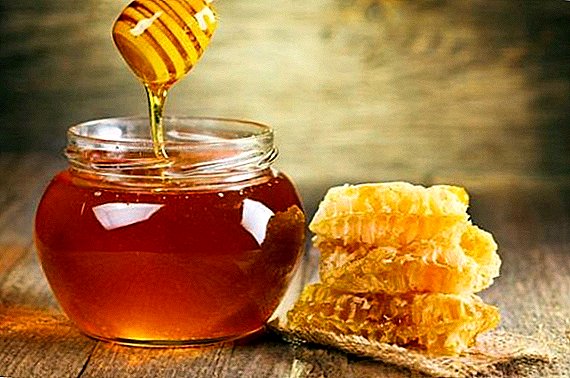 Rather rare, but surprising and unique decoration of a modern garden - Perovskii or Russian sage - a real wonder for novice gardeners. If you want to impress others with the beauty of your garden plot or greenhouse, then this plant is your right choice.
Rather rare, but surprising and unique decoration of a modern garden - Perovskii or Russian sage - a real wonder for novice gardeners. If you want to impress others with the beauty of your garden plot or greenhouse, then this plant is your right choice.
Botanical description
Classic blue color perennial perovskiy - It is a tall herbaceous plant, shrub from the family of yarnotkovyh or labourant, outwardly and scent reminiscent of the domestic representative of the flora - sage.  Its family has only 9 species, most of which grow on the mountainside of Central Asia, stretching across the territory of Afghanistan and Northern Iran to the Republic of Pakistan and the northern part of India. In the Central Asian and Southern European regions, this plant reaches a level of 170 cm, while in a foreign land the average height of Perovsk varies from 50 to 70 cm.
Its family has only 9 species, most of which grow on the mountainside of Central Asia, stretching across the territory of Afghanistan and Northern Iran to the Republic of Pakistan and the northern part of India. In the Central Asian and Southern European regions, this plant reaches a level of 170 cm, while in a foreign land the average height of Perovsk varies from 50 to 70 cm.
On the stems of the dull-white color of Russian sage, next to the foliage of a lilac-silver shade, there are purple flowers with a blue tint in the form of panicles, which have a strong fragrant and pleasant smell.
It will be interesting for you to read how to grow medicinal, nutmeg and oak sage, as well as read about growing sage on a windowsill.
Such a plant will be liked best by lovers of mountainous and amazingly smelling herbs and flowers, such as, for example, wormwood, lavender, oregano (oregano), mint, thyme (thyme), catnip, etc.
The flowering period begins in July and lasts until October. Perovskiya has a smooth outer root system with numerous lignified stems below. Annual vegetative organs of the plant are pubescent grassy and furrowed.  In England, it is called "Russian sage", which means "Russian sage". And, I must say, this is very strange, because if Russia were his homeland, then there would be most of him there, but in reality it practically does not occur in Russian gardening.
In England, it is called "Russian sage", which means "Russian sage". And, I must say, this is very strange, because if Russia were his homeland, then there would be most of him there, but in reality it practically does not occur in Russian gardening.
Kinds
All types of perovskii have a decorative purpose, while among the most cultivated can be called only two: Perovsky wormwood (other name - fragrant or therapeutic), and swan-leaved (otherwise - Pamiralso called in the west azure sage):
- First most common in the mountain systems of Central and South Asia (Tien Shan, Turkmenistan, Iran, Afghanistan, Tibet, Pakistan, Kashmir) on dry pebble, rocky and gravelly prone surfaces.
 This variety is a medium height (0.5 cm - 1 m) shrub of a wide shape with small lilac or purple flowers, gathered in panicles, which bloom in early June and persist through August.
This variety is a medium height (0.5 cm - 1 m) shrub of a wide shape with small lilac or purple flowers, gathered in panicles, which bloom in early June and persist through August.In England, there is a hybrid type of perovskii medicinal, which is called a hybrid one. View of the plant was discovered in Kyrgyzstan: different bluish-green foliage and a dark shade of purple-colored flowers that appear at the end of summer.
- Second type of perovskii grows on gravelly slopes and stone rocks of Afghanistan, China, Pakistan, the northern part of India.
 This shrub is higher than the previous one (0.9–1.5 m) and stands out with tender lavender flowers that appear at the end of summer and continue to bloom until late autumn.
This shrub is higher than the previous one (0.9–1.5 m) and stands out with tender lavender flowers that appear at the end of summer and continue to bloom until late autumn.
Did you know? Russian General Vasily Perovsky in 1839-1840 led the Khiva campaign, trying to conquer Central Asia and first brought the Central Asian beauty to Russia, from his name went the Latin name "Perovskia".Later, the plant began to grow throughout the country, however, preferably in areas with a warm and hot climate.
A number of varieties of this variety Perovskiy has its own unique characteristics:
- "Filigran": height - up to 90 cm, bluish foliage, purple shade flowers, distinctive features - steadily vertical growth and long-term flowering;
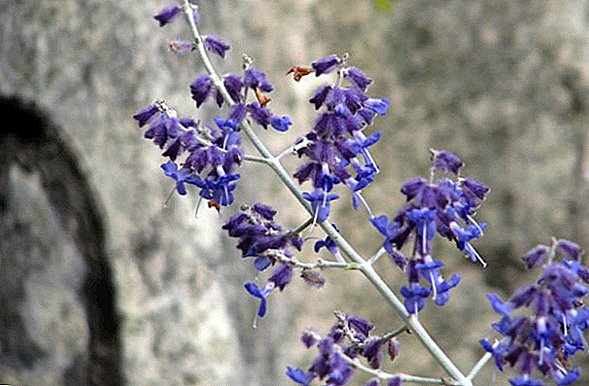
- "Blue Spire": size up - up to 120 cm, gray foliage, blue-violet flowers, distinctive features - the flexibility of the stems, flowering from the second half of July until the autumn;

- "Blue Mist": light-colored blue flowers, a distinctive feature - earlier flowering;
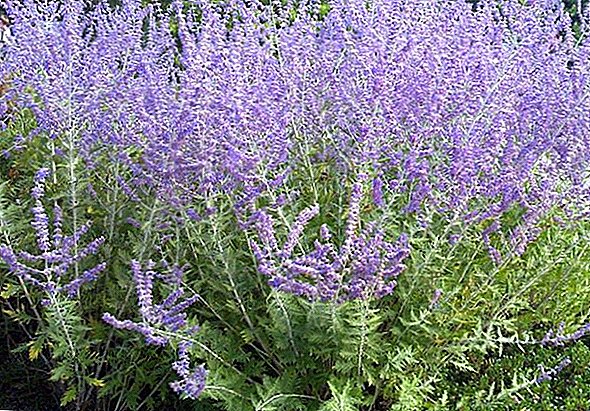
- "Lacey Blue": height - 45-50 cm, flowering from July to autumn, distinctive features - the largest flowers;

- "Longin": length - 90-120 cm, vertical arrangement of the stems, silver-green foliage;

- "Superba": height - up to 120 cm, gray-green foliage, lilac-purple flowers, cold resistance - up to minus 15 degrees Celsius;

- "Taiga": size up - 40-50 cm, light turquoise flowers, flowering - from late summer to October, high frost resistance;

- "Silvery Blue": height - up to 60 cm, gray-silver leaves, flowers of blue shade, blooms from late summer to early autumn;

- "Little Spire": length - 45-75 cm, bluish-purple foliage, lilac flowers with delicate blue tint.

Read also about the beneficial properties of medicinal and meadow sage, also learn how to distinguish these plants.
Breeding
Among the methods that contribute to the continuation of the Perovskian type are the following:
- seminal;
- cherenkovogo (at the same time semi-woody parts of the plant are used).
Cuttings
Vegetative breeding method is the most common in the cultivation of this floristic representative of nature.
- For cutting, in spring, separate cut lignified stalks are taken, and for summer reproduction - parts of a plant with a piece of rhizome or apical.
- A well-drained soil with pre-regulated humidity (mainly in a greenhouse) is prepared for further rooting, and the shelter must be well and regularly ventilated to avoid condensation and rotting of plant parts.
- The formation of roots occurs in the first two weeks (approximately on the 10-14th day), and only after that it is allowed to regularly feed a young representative of the flora with mineral fertilizers. Full root penetration falls at the end of the month - the fifth week after inoculation.
- Seedlings are placed in separate pits, dug at a distance of at least 50 cm from each other, while observing the standard planting depth of such plants.
Seeds
- Before the onset of winter or spring, plant seeds are sown in open ground (in the second case, it can be done through seedlings).
- Before that, they should be in the conditions closest to the natural winter (at plus 4-5 degrees Celsius). Such a preparatory process is called stratification, and it is intended to accelerate the growth of embryos.
- Sowing depth - 2-3 cm with spacing of about 50-70 cm.
 Plants that multiply through seeds reach their maximum height in the first year of their life, although the characteristic feature is the period of appearance of flowering (as a rule, this is the 3-5th year after sowing).
Plants that multiply through seeds reach their maximum height in the first year of their life, although the characteristic feature is the period of appearance of flowering (as a rule, this is the 3-5th year after sowing).Did you know? The grass, especially the perovskiy fragrant, smells so nice, reminding itself of strawberries that it is used in flavoring teas, alcoholic and non-alcoholic drinks, and the flowers also have a unique taste, which allows them to be used even when cooking salads, baking and decorating dishes as seasoning. and a separate component.
Plant Care
The main conditions for normal life in the middle climate zone should be the location on a sunny, well-drained area with alkaline (non-acidic) soil, as well as a mandatory shelter in the winter season and opposition to stagnant water.
Watering
These plants are unpretentious in the care: they should be watered only in case of prolonged dry weather, once in this case it will be enough. When watering, however, we must try not to fall on the shoots of the plant.
Humidity
In general, any type of this plant is designed for dry and well-lit areas. Shadowiness makes their stems and branches less resilient and viable.
One of the requirements for soil is a neutral and alkaline level of acidity, and moderately drained places drained are the key to the proper cultivation of a semi-shrub. 
We recommend that you read how to independently determine the acidity of the soil at the site, as well as how to deoxidize the soil.
Top dressing
Top dressing depends on the quality of the soil, if it is fertile or medium fertile, then you can do without feed. For the full blooming of flowers on soil with a low level of fertility, the plant needs a mineral complex of fertilizers; compost or bone meal is best for development and flowering.
Important! The fat content of the soil affects perovskian frost resistance: in this case wood does not develop at all.
Mulching
This process is performed every time after pruning or in order to avoid over-wetting of the soil due to prolonged precipitation in the form of rain or snow. It is most effectively used when using rotten compost.
Pruning
In early spring, it is necessary to cut the stems in order to update at a height of about 20 cm, while the cut parts can be used in the case of grafting. In winter, on the contrary, they are not touched in order to make the plant easier to endure the cold.
Shelter for the winter
Wormwood perovskiy belongs to plants with the 5th zone of frost resistance (up to minus 28 degrees Celsius).  For wintering, its near-root part is rolled with a consistency of sand with wood ash with the calculation of one cup of ash on a bucket of sand and covered with a dry leaf.
For wintering, its near-root part is rolled with a consistency of sand with wood ash with the calculation of one cup of ash on a bucket of sand and covered with a dry leaf.
Did you know? Plants also have unique medicinal properties that have not yet been fully studied, and to this day active research has been observed in Pakistan and Iran. In the Republic of Pakistan, in folk medicine, Perovskia is used to treat intestinal infections, headache, toothache, gonorrhea, vomiting and nausea, heart and vascular diseases, bronchus, liver fibrosis, and in Iran - infectious skin diseases (leishmaniasis).
Winches of Perovskia are in the 4th zone of winter-hardiness (able to tolerate frosts down to minus 34 degrees Celsius). Winter care for her has a similar direction.
Examples of use in landscape design
In horticulture, perovskies are used instead of lavender and wormwood and are often seated on gravel and siliceous garden plots, dried up on southern sloping surfaces.
Due to the high level of drought tolerance, they are also known in the use of container compositions. The greatest efficiency in appearance can be achieved if you plant them en masse at a distance of 60-70 cm from each other. Such placement in the garden creates a “blue sea or fog” species effect.
The favorite gray-silver borders of foliage, decorated at the top with bright inflorescences, will become a real decoration of the garden interior of your site. These floristic representatives of nature are a good background for other drought-resistant perennials (echinacea, hyssop, serpentine, catnip, aster), and also combine well with verbena, fennel, and green leafy flowering plants.  The unique aroma attracts butterflies and pollinating insects, and dried inflorescences are used not only in winter flower arrangements and bouquets, but also for cosmetic and culinary purposes.
The unique aroma attracts butterflies and pollinating insects, and dried inflorescences are used not only in winter flower arrangements and bouquets, but also for cosmetic and culinary purposes.
As a rule, this shrub is chosen by amateurs to place geometric accents on their garden plot ("points", "chess", other figured varieties), as well as the foot of an alpine slide or flat rock arias.
Difficulty growing
It is with this plant that there are no difficulties in the process of cultivation and care, as it is uniquely adapted to any conditions, ranging from drought to the big frost. Therefore, the usual rules of care, standards of caution and protection against pests - the basic rules that must be followed when choosing a perovskiy as a guest of your garden.
Important! All parts of the plant are used for cosmetic purposes - for the manufacture of fragrant essential oils containing more than 40 valuable components.
Diseases and pests
Resistance to diseases and pests, good endurance of temperature fluctuations and air flows on our land was borrowed from its ancestors, growing in mountainous and desert areas.
Thanks to the essential oils that are contained in the glands of the plant and are periodically released by them, pests rarely spoil the livelihoods of Perovskii. Moreover, under their peculiar protection there are also neighboring representatives of the flora that inhabit the garden.  In rare cases, its outer part can strike the aphid, and the root system may be subject to attacks by spider mites and whitefly.
In rare cases, its outer part can strike the aphid, and the root system may be subject to attacks by spider mites and whitefly.
Read more about how to deal with spider mite and whitefly.
To get rid of them will help as folk remedies (infusions of garlic, tomato leaves or soap solution), and special preparations.
In general, Perovskiy is a unique, unpretentious plant that will be an excellent decoration of your garden.


 This variety is a medium height (0.5 cm - 1 m) shrub of a wide shape with small lilac or purple flowers, gathered in panicles, which bloom in early June and persist through August.
This variety is a medium height (0.5 cm - 1 m) shrub of a wide shape with small lilac or purple flowers, gathered in panicles, which bloom in early June and persist through August. This shrub is higher than the previous one (0.9–1.5 m) and stands out with tender lavender flowers that appear at the end of summer and continue to bloom until late autumn.
This shrub is higher than the previous one (0.9–1.5 m) and stands out with tender lavender flowers that appear at the end of summer and continue to bloom until late autumn.








